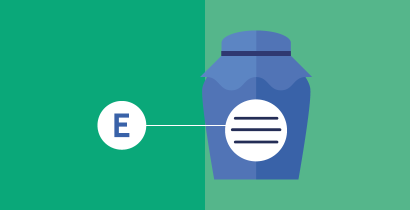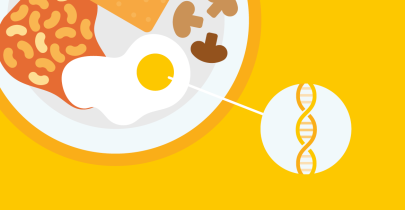Food preservatives: additives that make food last longer
Last Updated : 03 July 2004Preservatives are a recurring topic in public discussions, and whenever it crops up, many consumers associate them with harmful, modern chemicals in foodstuffs. But, as a brief look back into the past will show, preservation of food was practised several hundred years ago when man first used salt (salting) and smoke (curing) to stop meat and fish from going bad. Despite a number of misgivings, preservatives have nowadays become an indispensable part of the food we eat. One reason for this is the increasing demand from consumers for greater choice, ease and convenience of foods, and our high standards of food safety.
Why are foods preserved?
Preservation is usually defined as a method used to maintain an existing condition or to prevent damage likely to be brought about by chemical (oxidation), physical (temperature, light) or biological (microorganisms) factors. Preserving food, made it possible to have food available from harvest to the next year. The main function of preservation is thus to delay the spoiling of foodstuffs and to prevent any alterations in their taste or, in some cases, their appearance. This can be done in different ways, through processing methods including canning, dehydration (drying), smoking and freezing; the use of packaging; and the use of food additives such as antioxidants or other preservatives. In this article we will focus on preservatives
The primary reason for using preservatives is to make foods safer by eliminating the influence of biological factors. The greatest threat to consumers is that of food being spoiled, or from becoming toxic by the effect of micro-organisms (e.g. bacteria, yeast, moulds) occurring in them. Some of these organisms can secrete poisonous substances (“toxins”), which are dangerous to human health and can even be fatal.
How are foods conserved, and what substances are used?
To delay the spoiling of foodstuffs by micro-organisms, anti-microbial substances are used which inhibit, delay or prevent the growth and proliferation of bacteria, yeasts and moulds. Sulphur compounds such as the sulphites (E221-228) are used to inhibit the growth of bacteria e.g. in wine, dried fruits, vegetables in vinegar or brine. Sorbic acid (E200) can be used for many different purposes, including the preservation of potato products, cheese and jam.
Another important group of substances consists of the nitrate and nitrite compounds (E249-252). These are used as additives in meat products such as sausages and hams to protect against the bacterium that causes botulism (Clostridium botulinum), and in this way they make a significant contribution to food safety.
Benzoic acid and its calcium, sodium or potassium salts (E210-213) are used as antibacterials and antifungals in foods such as pickled cucumbers, low sugar jams and jellies, dressings, condiments.
Examples of widely used preservatives in the EU:
|
E-Number |
Substance/class |
Some foodstuffs in which they are used |
|---|---|---|
|
E 200-203 |
Sorbic acid and sorbate compounds |
Cheese, wines, dried fruit, fruit sauces, toppings |
|
E 210-213 |
Benzoic acid, and benzoate |
Pickled vegetables, low sugar jams and jellies, candied fruits, semipreservedfish products, sauces |
|
E 220-228 |
Sulphur dioxide and sulphite compounds |
Dried fruits, fruit preserves, potato products, wine |
|
E 235 |
Natamycin |
Surface treatment of cheese and sausage |
|
E 249-252 |
Nitrite and nitrate compounds |
Sausage, bacon, ham, foie gras, cheese, pickled herring |
The need for controls and labelling
To ensure that preservatives really do help make foodstuffs safer, their use is subject to pre-market safety assessment and authorisation procedure. At the European level, the bodies responsible for the safety assessment, authorisation, control and labelling of preservatives and other additives are the European Food Safety Authority (EFSA) and the European Commission, Parliament and Council. At the international level there is a Joint Expert Committee, from the Food and Agriculture Organisation (FAO) and the World Health Organisation (WHO), on Food Additives (JECFA).
Safety assessment of preservatives, as for the rest of food additives, is based on reviews of all available toxicological data, including observations in humans and in animal models. From the available data, a maximum level of an additive that has no demonstrable toxic effect is determined. This is called the 'no-observed-adverse-effect level' (NOAEL) and is used to determine the 'Acceptable Daily Intake' (ADI) figure for each food additive. The ADI provides a large margin of safety and refers to the amount of a food additive that can be taken daily in the diet, over a lifetime span, without any negative effect on health.
The authorisation and the conditions of use of preservatives are governed by Directive 95/2/EC of the European Parliament and the Council of 20 February 1995 on Food Additives other than Colours and Sweeteners.
There has been much public concern that some food additives cause adverse reactions, although careful investigations show that it is mostly based on misconception rather than on identifiable adverse reactions. Preservatives have rarely been shown to cause true allergic (immunological) reactions. Among the food additives reported to cause adverse reactions are some preservatives from the group of sulphiting agents, which include several inorganic sulphite additives (E220-228), and benzoic acid and its derivatives (E210-213), may trigger asthma characterised by breathing difficulties, shortness of breath, wheezing and coughing in sensitive (e.g. asthmatic) individuals.
The European Parliament together with the European Council has laid down a detailed labelling system for food additives to enable consumers to make informed choices with regard to foods containing preservatives. Legislation also stipulates that additives are labelled on the packaging of food products by their category (preservative, colour, antioxidant, etc) with either their name or E-number.
Summary
Preservatives are still necessary to ensure the safety and variety of different foodstuffs available. They function through delaying the spoiling of foodstuffs and preventing any alterations in their taste or appearance. Their assessment and use in foodstuffs is tightly controlled at both the European and the international level.
More information
General information on food additives (rules on labelling of additives, intake, etc): http://www.fao.org/fao-who-codexalimentarius/en/



